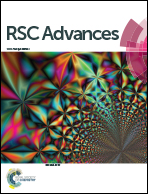Cold sintering of YBa2Cu3O7−δ
Abstract
Cold sintering is a sintering technique which enables ceramic powders to be densified at greatly reduced temperatures compared to traditional solid state techniques, which often require temperatures in excess of 1000 °C. These temperatures often preclude the exploitation of size or orientational effects in ceramics as these are lost during heating. One such effect is the orientation of the crystallographic c axis in YBa2Cu3O7−δ (YBCO) which can be controlled through applied pressure. This effect is of interest for increasing critical current density which is highly dependent on the orientation of the a–b (CuO2) planes within the ceramic. Using cold sintering, we demonstrate that dense YBCO can be created at 180 °C (vs. 1000 °C using solid state) and demonstrate that the likely sintering mechanism is mediated by the cracking which occurs in YBCO when exposed to water. In addition, the ceramics produced show and retain the orientational effect, representing a unique opportunity to study the effect on critical current density. We show that the intergranular critical current when the a–b planes are parallel to the applied field is around 15% higher than when perpendicular.



 Please wait while we load your content...
Please wait while we load your content...